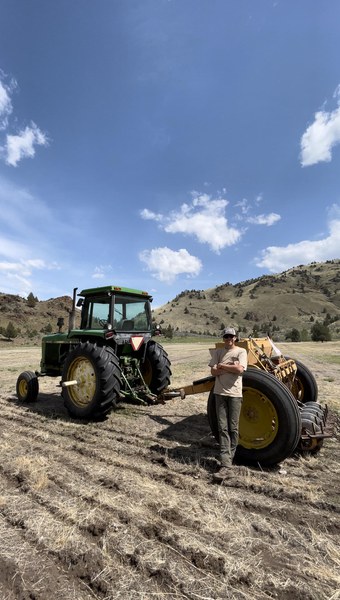The Land Trust has been busy this spring on a field restoration project in the valley along Trout Creek at Priday Ranch. This is part of a larger, multi-year effort that began last year.

We are using the same blend of nine native grasses that we used last year—grasses like great basin wild rye and and bottlebrush squirreltail. Although the grasses we are planting are native and drought tolerant, the first year of growth is crucial. Supplemental watering and controlling weeds this spring and summer will help increase the native grasses' chance of survival.
Meanwhile, the 20 acres we converted back to native habitat last year are looking good! With this spring's recent rains, the native grasses are greening up and invasive annual grasses like cheat grass and medusahead are minimal. Since this area has had a year to get established, we are no longer irrigating the new native plants. Finally, on both portions of the project, we'll be monitoring progress throughout the year and managing weed populations.
In future years, we look forward to having a healthy stand of native grasses with fewer weeds. Once this occurs, we'll add more diverse plants to these restoration areas including flowers and other plants important to pollinator species.
Learn more:


